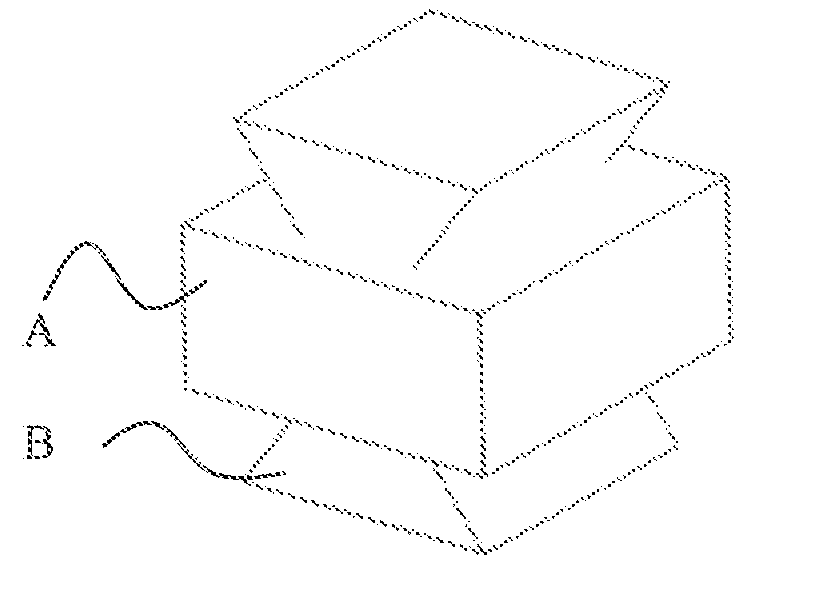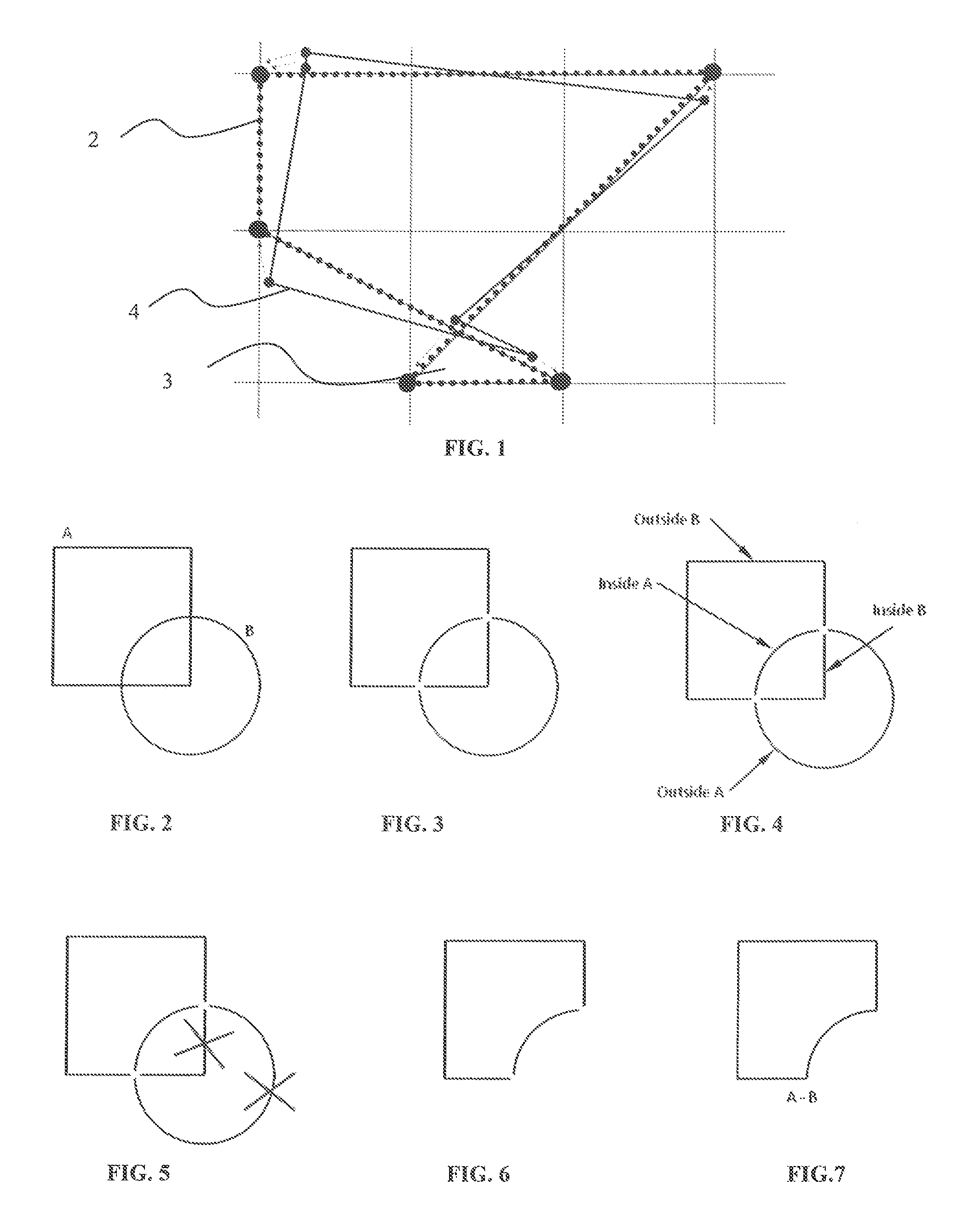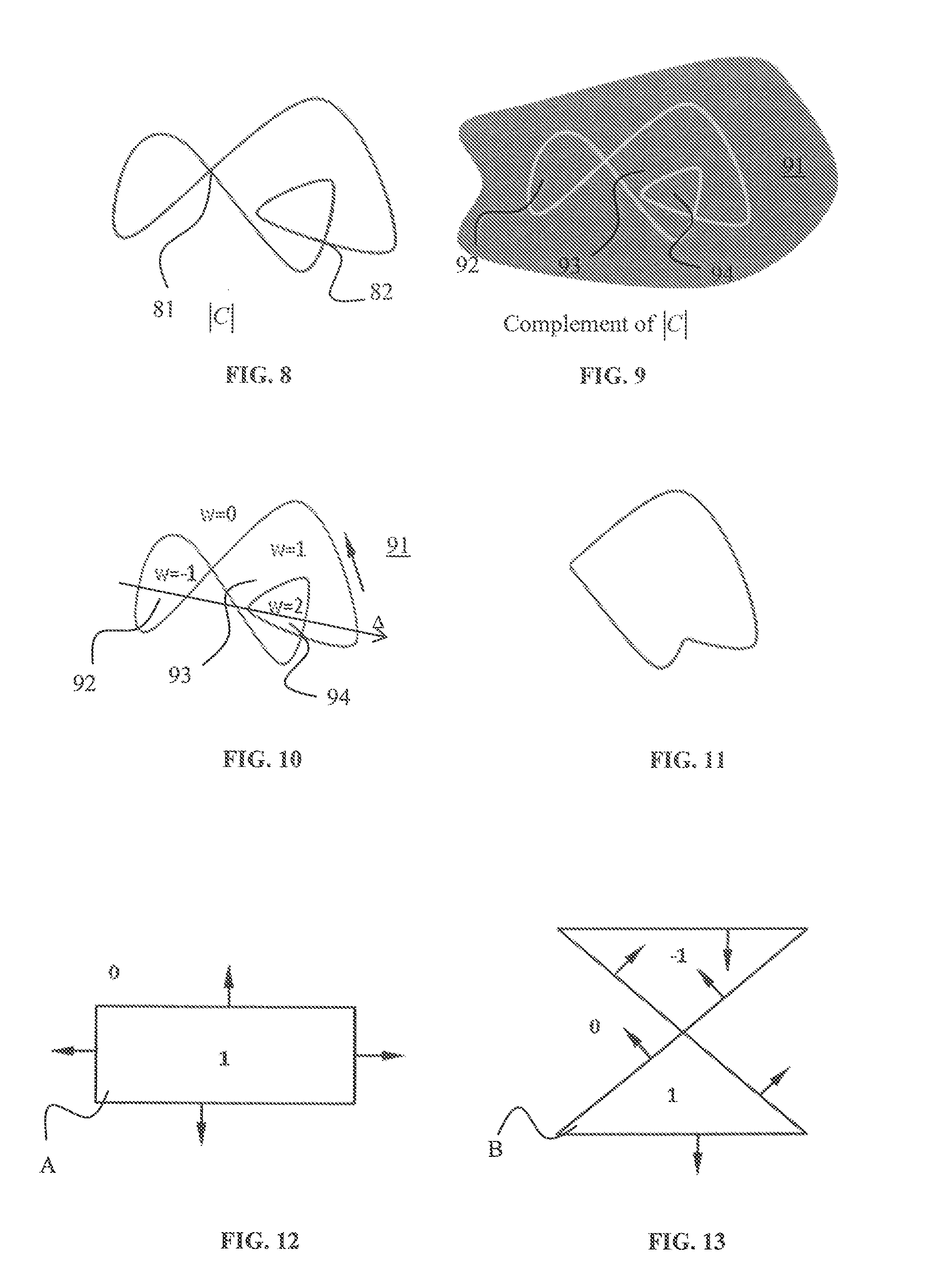Computing of a resulting closed triangulated polyhedral surface from a first and a second modeled objects
a polyhedral surface and closed triangulated technology, applied in the field of computer programs and systems, can solve the problems of inability to rigorously and scientifically support the use of geometric modeling and processing based on the floating point paradigm, the inability to develop a robust boolean operator based on the floating point framework, and the inability to solve complex mathematical operations
- Summary
- Abstract
- Description
- Claims
- Application Information
AI Technical Summary
Benefits of technology
Problems solved by technology
Method used
Image
Examples
Embodiment Construction
[0072]The teachings of all patents, published applications and references cited herein are incorporated by reference in their entirety.
[0073]The invention is directed to a computer-implemented process, in a computer-aided geometric design system, for computing a resulting closed triangulated polyhedral surface from a first and a second modeled object. The first modeled object is modeled by a first closed triangulated polyhedral surface and the second modeled object is modeled by a second closed triangulated polyhedral surface. The process comprises a step of computing intersections between triangles of the first modeled object and triangles of the second modeled object. Next, triangles of the first and second modeled objects are split into polygonal facets adjacent to said intersections. Then, two couples of winding numbers (noted p and q) are computed for each triangle and each polygonal facet. The first winding number of each couple of winding numbers is computed from the first cl...
PUM
 Login to View More
Login to View More Abstract
Description
Claims
Application Information
 Login to View More
Login to View More - R&D
- Intellectual Property
- Life Sciences
- Materials
- Tech Scout
- Unparalleled Data Quality
- Higher Quality Content
- 60% Fewer Hallucinations
Browse by: Latest US Patents, China's latest patents, Technical Efficacy Thesaurus, Application Domain, Technology Topic, Popular Technical Reports.
© 2025 PatSnap. All rights reserved.Legal|Privacy policy|Modern Slavery Act Transparency Statement|Sitemap|About US| Contact US: help@patsnap.com



